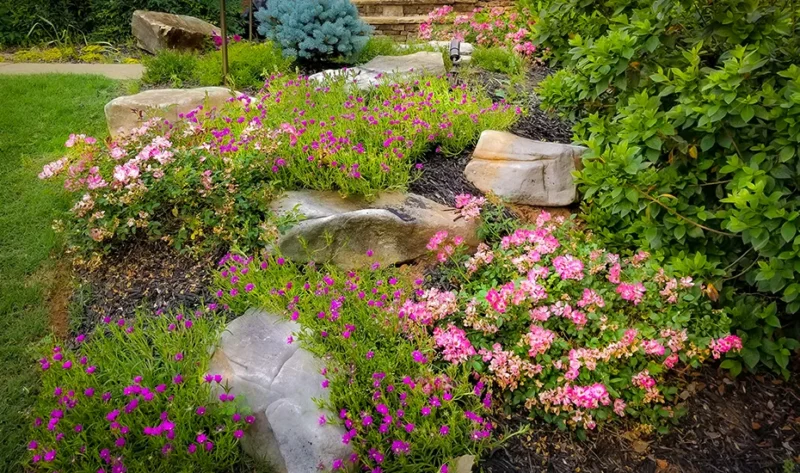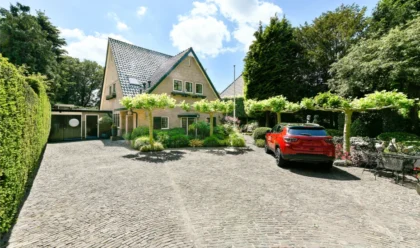Your roof is more than just a protective covering; it’s a crucial component of your home’s structure and overall value. A well-maintained roof not only shields your family from the elements but also contributes to your home’s energy efficiency and curb appeal. Choosing the right roof can be overwhelming with countless roofing materials and factors to consider. This comprehensive guide will equip you with the knowledge to make informed decisions about your roofing needs.
Understanding the different roofing materials, their benefits, drawbacks, and suitability for various climates and home styles is essential for selecting the perfect roof for your property. By the end of this article, you’ll have a clear grasp of the factors influencing roofing decisions and be empowered to choose a roof that protects your home and enhances its aesthetic appeal.
Understanding Roofing Basics
A basic understanding of roofing materials is essential before delving into it. A very important factor in determining which kind of roofing material one prefers is the type of roof they have.
Roof Types
Shape and design are crucial in selecting the suitable roofing material for your home. The common types include:
- Gable roof: This triangular-shaped roof is most popular among homeowners because it promotes ventilation.
- Hip Roof: Hip roofs are known for their durability and attractive appearance due to their four sloping sides.
- Flat Roof: Despite its name, this roof has a slight slope that enables water to drain off quickly.
- Complex Roofs: They comprise different combinations of roofing styles often seen in custom homes.

Roof Pitch
Roof pitch, expressed as degrees or rise over run, determines whether particular materials are suitable for use. Although steep pitches allow for better water runoff, they can limit what you can put up; on the other hand, low-pitched roofs require materials that withstand ponding water.
Roof Underlayment
This protective layer installed under your roof covering goes unnoticed by many people. That further protects against leaks from water infiltration, prolonging the life span of your roof.
Roof Ventilation
Proper aeration avoids dampness, which leads to mildew, rotting, and ice dams. Proper ventilation is provided by providing intake vents at the eaves and exhaust vents at the ridge.
Knowing these crucial factors about your roof system will enable you to choose wisely while selecting materials for your roof and their maintenance programs.
Common Roofing Materials
The type of material one chooses for roofing influences the general appearance and durability and the cost implications for the entire home. Let us examine some of them:

Asphalt Shingles
- This is one of the most common options due to its affordability and ease of installation.
- Comes in different styles and colours.
- Pros: Low-cost, readily available, low maintenance requirement.
- Cons: It has a shorter lifespan than other materials, and it is fragile when strong winds strike it or even under the sun, making it more prone to fading color.
- It is ideal for budget-conscious owners living in areas with mild weather conditions.
Metal Roofing
- Metal roofing renowned for being long-lasting, energy-efficient, and have a contemporary look.
- Available in various types, such as standing seam or corrugated designs.
- Pros: Long life expectancy, fire resistance, easy upkeep, eco-friendly.
- Cons: High initial cost, rain or hail noise may be a bother during the wet season, and it is only recommended after professional installation.
- Best suited for: This roofing system can be expensive unless you look forward to long-term investment, especially for those living around coastal lines or wildfire zones with a high risk of fire outbreaks.
Tile Roofing
- It is a classic offer that looks elegant and has a classic appearance.
- It is available in concrete and clay variations.
- Pros: Outstanding durability, low maintenance costs, fire resistance, decorative value.
- Cons: High price, heavy weight (structural reinforcement required), possible freeze-thaw cracking.
- Ideal for: Homeowners who want luxury, Mediterranean or Spanish style homes and hot climate areas
Slate Roofing
- This is a very long-lasting, rich choice.
- Its longevity and natural beauty are some of the things that make it stand out.
- Pros: Incredible lifetime expectancy, easy to maintain, unique appearance.
- Cons: Exorbitantly expensive cost per square foot, weighty material, chances of breakages and limited color availability,
- Best suited for: Homeowners with deep pockets looking for an ageless and reputable roof.
Wood Shingles
- Has an old-fashioned look of a rustic nature.
- These shingles are usually made from cedar, pine, or redwood tree species.
- Pros: It has a never-out-of-date ambiance, perfect soundproofing, and environmentally friendly material.
- Cons: It requires a lot of maintenance work, can easily be destroyed by fire or pests, leading to rotting, and has a shorter life than other forms.
- This type is most suitable for those homeowners who prefer traditional outlooks coupled with timely care investments while residing in areas with low fire risk.
Note: While often used interchangeably, wood shingles differ from wood shakes. Shingles are sawn, resulting in a smoother appearance, while shakes are split, offering a more rustic texture.
Green Roofing
- An eco-friendly and sustainable option.
- Entails planting vegetation on a rooftop.
- Pros: It purifies the air, lessens the amount of water runoff from storms, insulates and creates natural habitats for animals, and makes places attractive to people.
- Cons: More expensive initially; specialist installation and maintenance needed; adds weight to the roof.
- This is more suitable for environmentally conscious homeowners, buildings with flat or low-sloped roofs, and areas that receive a lot of rainfall.
Note: Extensive (low-maintenance) and intensive (garden-like) green roofs exist.
Solar Roofing
- Merges energy generation with roofing.
- Incorporates solar panels into roofing components.
- Pros: It produces clean energy, is a potential source of power independence, saves money in the long run, and looks good.
- The cons are that it is Expensive upfront and requires expert installation services, and efficiency can vary depending on the area and sunlight exposure levels.
- Best Suited For: Environmentally friendly home owners who have the right orientation of their rooftops and sun exposure and want to save energy in the long run.
Factors to Consider When Choosing a Roof
Choosing an ideal roofing material involves considering various factors. Here are some main things to think about:

Climate and Weather Conditions
- Local climate: Be aware of local climatic patterns such as rainfall data, snowfall trends, wind speeds, and temperature ranges.
- Extreme weather: How frequent and severe are storms, hurricanes, or hail in your area?
- Material suitability: Choose a roofing material suitable for your locality’s climate.
Home Style and Architecture
- Roof pitch: This determines the materials that can be used on your roof.
- Architectural style: When choosing roofing materials, aesthetic considerations are essential for the design of your home.
- Complementary look: Choose a roof that improves your house’s general appearance.
Budget
- Material costs: Roofing materials are available at varying prices.
- Installation costs: Labor and labor charges and additional materials used during the process should also be considered.
- Long-term value: The lifespan of the material matters, and its potential return on investment should also be factored in.
Environmental Impact
- Eco-friendly options: Consider recycled-content products or ones that have low environmental impact.
- Energy efficiency: Consider roofing materials that offer insulation or solar power capabilities.
- Sustainability: Choose materials that have a long life span.
Homeowner Association (HOA) Restrictions
-
- Compliance: Confirm if your HOA has specific roofing material requirements.
- Color and style limitations: The chosen roof should not break any of the rules set by the HOA. Considering these elements, one can select a roofing material that will shield their house, match its style, and fulfill their financial plan and environmental objectives.
Roofing Maintenance and Repair
Proper roof maintenance is crucial for extending its lifespan and preventing costly repairs.
Regular Roof Inspections
-
-
-
- Frequency: Aim for at least two annual inspections, spring and fall.
- Checkpoints: Inspect for missing or damaged shingles, leaks, clogged gutters, and signs of wear and tear.
- Professional inspections: Consider hiring a roofing contractor for a thorough evaluation every few years.
-
-
Common Roofing Problems and Solutions
-
-
-
- Leaks: Identify the source of the leak and address it promptly.
- Shingle damage: Replace damaged shingles to prevent further issues.
- Gutter clogs: Clean gutters regularly to prevent water damage.
- Ice dams: Install proper ventilation to reduce ice dam formation.
-
-
Signs of Roof Damage
-
-
-
- Leaks: Water stains on ceilings or walls.
- Damaged shingles: Curling, buckling, or missing shingles.
- Granule loss: Excessive granules in gutters or on the ground.
- Moss or algae growth Can contribute to shingle deterioration.
-
-
Hiring a Roofing Contractor
-
-
-
- Research: Get recommendations and read reviews.
- Licensing and insurance: Verify the contractor’s credentials.
- Estimates: Obtain multiple quotes for comparison.
- Contract details: Clearly outline the scope of work and payment terms.
-
-
Following these guidelines can protect your investment and ensure your roof’s longevity.
Conclusion
Your roof is a critical component of your home, protecting it from the elements and significantly impacting its value. By understanding the various roofing materials, their pros, cons, and suitability for different conditions, you can make informed decisions to safeguard your investment.
Regular inspections, maintenance, and promptly addressing issues are essential for prolonging your roof’s lifespan. Hiring a qualified roofing contractor is crucial when it’s time for roofing repair or replacement.
With careful planning and proper care, your roof can provide reliable protection and enhance your home’s overall appeal for years to come.























